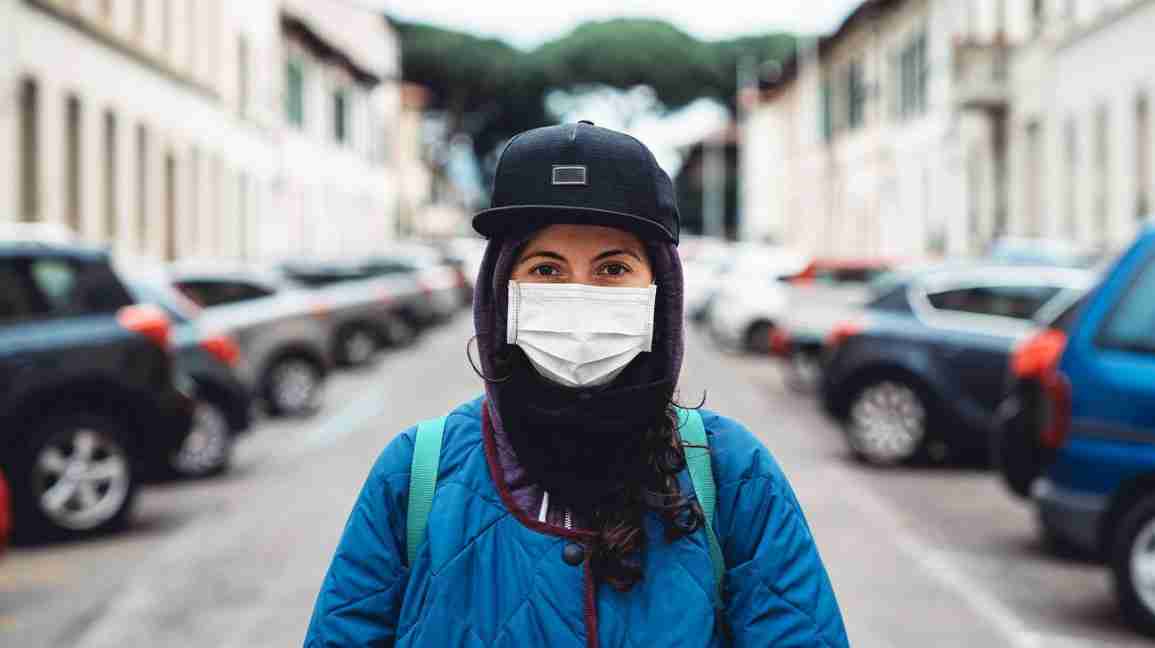
- Anxiety disorders are the most common mental illness in the United States, affecting 40 million adults, according to the Anxiety and Depression Association of America.
- Getting back into a social routine after isolating may bring about anxiety.
- Socializing at your own pace and practicing self-care can help ease social anxiety.
All data and statistics are based on publicly available data at the time of publication. Some information may be out of date.
Since your social calendar has been blank for the last few months, filling it back up can feel liberating — but it can also cause anxiety.
“The change from having a highly social work and personal life to nothing at all can be really detrimental to a person’s mental health, and may cause many people who are normally extroverted to feel like they are becoming introverted and not wanting to mix with others,” Jana Abelovska, medical advisor for Click Pharmacy, told Healthcare Website.
Emily Anhalt, PsyD, founder of Coa, agrees, noting that isolation is emotionally draining and can feed into social anxiety.
“We are not gathering experiences that disprove our worries; there’s no gradual exposure [to our worries]. Normally when you are being social in a regular way, you are having some of your worries disproven. You’re getting used to them. You have a chance to try different things and see what helps with your worry, but now that we are all on our own, jumping back into the unknown poses its own set of anxiety,” Anhalt told Healthcare Website.
As you begin to socialize in person more, the following simple tips can help put your anxiety at ease.
For those who live with social anxiety, Dr. Allie R. Shapiro, psychiatrist with Community Psychiatry, says to slowly enter into a social life.
“This will help them to ease into situations that were previously uncomfortable. As quarantine ends, the auto-avoidance will also end, necessitating their introduction back into situations they deeply fear. That’s not a leap anyone should take all at once,” Shapiro told Healthcare Website.
Start by connecting with those in your closest inner circle.
“That circle is your comfort space, and people you feel most like yourself with and can be honest with and who you trust,” Anhalt said.
When you’re ready, she suggests reaching out to people you enjoy being with but may feel nervous around and need warming up to. Eventually, expand your circle to include people and situations that make you anxious.
“[The idea is to] give yourself a little taste of something that makes you anxious and then wait for the anxiety to calm down. Then increase your exposure a little more and wait for the anxiety to come down,” Anhalt said.
If you’re not ready to see people face-to-face, Abelovska suggests setting a goal to talk with a different person each day over the phone or via video chat.
“After you have had a week of calling a friend a day, why not go further and organize a group call with a few friends to get used to group interaction. If you feel ready, why not get a date [on the calendar] for a socially distanced walk with a friend,” she said.
Shapiro recommends preparing for upcoming social events by role-playing specific worries or concerns with someone you trust, on paper or in your head.
Abelovska elaborates by explaining if you have an upcoming walk planned with a friend or are about to meet them at the park, try to mentally plan your meetup and how you’d like it to go.
“Visualize your friend when you see them and what you will say. It may be awkward at first, especially as we are not able to hug or touch friends, but you will soon adapt to the new way of greeting a loved one,” she said.
Another strategy Shapiro suggests is to challenge internal negative thought patterns with a reversal thought, either before or during anxiety-provoking situations.
For example, if you’re going to an outing where you’ll be around new people, she says, “Instead of auto-thinking, ‘These people won’t like me and will make fun of me,’ try: ‘They’ve been stuck inside for months just like me. We’ll trade stories. They will like me and I’ll probably find one new friend,’” she said.
Even if it seems like everyone around you isn’t worried or scared to get back into the world, Shapiro says it’s acceptable to have your own reaction and anxieties about the situation.
“Remember, no one has ever been through anything like this in the modern world, so no one really knows how to do it ‘right.’ Even the experts don’t have all the answers, so it’s normal to have your own uncertainties and doubts,” she said.
Socialize at your comfort level, Shapiro adds.
“You’re not obligated to do anything that makes you feel uncomfortable or puts you at risk. There are a lot of different factors that will affect when you feel it’s the best time to start venturing out. Think about your age, health history, quarantine situations, and even your own anxiety when taking that next step outside,” Shapiro said.
Feelings of safety in the world validate some of our anxieties, notes Anhalt.
“There is so much unknown about what is ultimately safe, and some of our fears about being out in the world are actually warranted, so it’s a good idea to be thoughtful about who you are engaging with socially, and understand if they are [on the same page] as you are,” she said.
Share your feelings of panic and fear over social plans with those who are closest to you.
“You may feel slightly embarrassed about these feelings, especially if you are usually the life and soul of the party, but there’s no shame in feeling slightly overwhelmed by the changes, especially after so much time spent alone,” Abelovska said.
“I can guarantee that at least one of [your friends] will be going through the same thing and will be glad and relieved that you have spoken about it,” she said.
Prioritizing your physical health, learning breathing exercises, developing self-reflective practices like therapy and journaling, and talking to friends and family about your worries are all practical parts of anxiety management, says Anhalt.
“While we don’t have a playbook, we can rely on coming back to ourselves and the present moment, and making sure we have [reliable] spaces in our lives so we can navigate the spaces that feel out of our control,” she said.
Anhalt believes that people who work proactively on their mental health are better equipped to handle the unknowns.
“It’s like doing emotional pushups, so when things get hard in the world, we have these core tools we can come back to that make us feel grounded,” she said.
She compares going back into the world like participating in an obstacle course that you didn’t get to see in advance.
“You might not be able to prepare for everything you’re going to encounter, but you can get your body and mind ready to handle difficult things beforehand. This will put you in a better position to navigate anything that comes your way,” Anhalt said.
If you’ve tried all you can to assimilate back into some form of socializing but anxiety and panic are interfering with your ability to do so, it may be time to reach out to a mental health professional.
Search the Anxiety and Depression Association of America for a licensed mental health professional who specializes in anxiety and related disorders.
